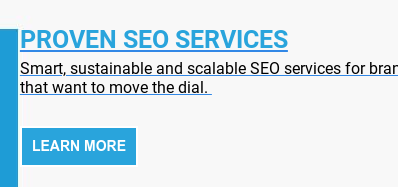Yesterday, Google announced the roll-out of a new update to its search algorithm. Nicknamed the “helpful content” update, this wide-reaching tweak is set to change the way Google evaluates the written content on your website.

More specifically, it’s set to boost the visibility of websites that prioritise content that’s “written for humans” – and reduce the rankability of websites that write spammy content designed to manipulate search engines.
Now, it’s not 100% clear how Google intends to separate the wheat from the chaff here. It’s often quite easy to spot over-optimised or intentionally spammy content that’s packed with keywords, but there’s still a huge grey area here:
What about content written by people who just aren’t very good at writing, and repeatedly re-use words and phrases in a way that looks like it’s designed to game the search engines? Or people who just can’t think of very much to write, and end up accidentally producing “thin” content that ends up flagged as manipulative?
Only time will tell whether Google can actually do a good job of differentiating between inauthentic and unintentionally poor content – and it’s not like Google has a particularly good track record in this department.
But all things considered, we’re not surprised to see Google rolling out an update like this. Ever since the heady days of 2014, Google have made it clear that they want to prioritise websites that publish authoritative, trustworthy content that’s written by experts (source: Forbes).
This is simply the latest development of this wider campaign, and we expect to see more algorithm updates that are designed to further refine Google’s ability to highlight and prioritise genuinely useful content.
Why Does Google Care About The Quality Of My Content?
Let’s go back to basics: Google (and its parent company Alphabet) generate most of their revenue from the pay per click (PPC) adverts that you’ll see loitering at the top of a given search results page.

People can only click these adverts if they’re using Google to answer pressing questions, and they’ll only use Google if it (consistently) provides reliable, useful and relevant information that answers their queries. Serve them up rubbish that reads like it was written to dupe a robot and they may well go and use another search engine.
So Google have a vested interest in making sure that the content at the top of a search engine results page (or SERP) is written for human users – and packed with useful information. Allowing spammy content to rank in its place is simply bad for business.
Google also has to consider its wider reputation too. In an age where there’s increasing competition for their admittedly gigantic share of the search engine market, Google have to make sure they’re providing a fantastic user experience to everyone that opts to use their product.
Fail, and they may just stop being relevant altogether.
But we’re not here to paint Google in a poor light: Mercenary or not, their decision to go after inauthentic content that’s written for search engines will undoubtedly make the web a better place.
And it’s a decision that resonates with our own approach, which has always been to write authoritative content that showcases our client’s expertise – and helps people move through whatever buying journey they’re currently embroiled in.
Why We’ve Always Been A “Human First” Digital Marketing Agency
Simply put, it's a false economy to optimise for robots and neglect your human visitors. You might be able to dupe Google into ranking your content for a brief time, but the people who click on and read your articles aren’t going to become brand advocates – or buy the product/service you're selling.

Taking a long-term view, your website should be generating money for your business. To do this, it has to reach people who’re looking for what you offer and - critically - persuade them that you’re a credible vendor.
So you can technically optimise a page in such a way that it ranks in the number one spot for a given keyword without actually writing to address the concerns of your audience, but it’s a total waste of time to do so. In fact, we’d go so far as to say that you’d only do it if your performance was being measured with a vanity metric like total site visits or you’d fundamentally misunderstood the purpose of SEO.
And yes, before you ask, that does mean there’s still a place for proper search engine optimisation. We know there are plenty of people out there right now, claiming that this update marks the “death of SEO” but there’s a huge difference between writing content for the sole purpose of manipulating a search engine, and optimising your content so that it’s easy for search engines to find.
All the hard work of coming up with a good title and meta description; making sure your <h> tags are well-written and getting the right balance of LSI keywords is still key to making sure your content actually shows up in search – it’s just that Google will (rightly) penalise you if you put this sort of thing ahead of the actual quality of your content.
So write for humans; write to inform and persuade, and then optimise to make sure your content gets the eyeballs it deserves.
How Do I Prove That My Content’s Written For Humans?
This is still a bit of an unknown, but Google have provided some basic guidelines in the blog post announcing their helpful content update.

They claim that the best way to make sure you’re writing “people first content” is to ask yourself the following questions before you put pen to paper (or fingers to keyboard, as it were).
- Do you have an existing or intended audience for your business or site that would find the content useful if they came directly to you?
- Does your content clearly demonstrate first-hand expertise and a depth of knowledge (for example, expertise that comes from having actually used a product or service, or visiting a place)?
- Does your site have a primary purpose or focus?
- After reading your content, will someone leave feeling they've learned enough about a topic to help achieve their goal?
- Will someone reading your content leave feeling like they've had a satisfying experience?
Tick these boxes and your content should be successful, the search giant claims (source: Google).
Breaking these bullet points down, we think there’s actually some really solid advice here. Especially the points about making sure that your content helps people achieve their goals and the points about being useful.
This is something that we’ve discussed at great length on our own podcast (Digital Marketing From The Coalface), but it’s also just generally solid advice for anyone selling online.
Focus on being useful, demonstrate expertise, and the rest should sort itself out.
What About The Content That’s Already On My Site?
If you’re wondering whether pre-existing content that’s already on your website will be classified as “written for humans”, we’d recommend spot-checking your bounce rate and time on page (ToP). These stats are readily available on Google Analytics and they tell you a lot about how people are interacting with your content.

For clarity, bounce rate is a measure of the percentage of people who land on a page, and then leave your site without navigating to another page or interacting with your content.
A high bounce rate (probably) means that people aren’t finding your content compelling or useful – although we do see some sites that have a high bounce rate because they do a poor job of guiding people to the next piece of relevant content or steering visitors towards things that’ll otherwise encourage interaction.
There are also (persistent) industry-wide rumours that Google may take the bounce rate of your page and site into account when calculating rankability, but it’s difficult to prove whether this is actually the case.
Time on page is a similar measure of engagement, tracking (you guessed it) the length of time someone stays on your page. If it’s very low (under 30 seconds) people are probably put off by the quality of your content or the design of your pages.
Obviously it’s hard to say which factor is having the greatest impact, but if you’re spot-checking content and seeing a lot of sub-optimal scores, it’s a sign that your content probably isn’t fulfilling the brief mentioned above.
What Do I Do If I Get Penalised?
Falling foul of this update doesn’t mean that you’re going to be awarded a manual penalty by Google. Nobody is going to write you an email that says “you’ve been bad and we’re taking away your visibility”.

But if you do have a lot of thin, over-optimised or unhelpful content on your site, you may find that you suddenly lose a lot of rankings and traffic. This update is going to be site wide, which means that Google will hammer your entire site if it finds a large proportion of your content is not up to scratch.
If this happens, we’d recommend a full audit of your site’s content. You’ll want to pick through every page, earmark the ones that have thin or spammy content that looks like it was written for search engines, and then work on replacing it with genuinely helpful content as soon as you possibly can.
In all honesty, this is also the ideal time to bring in experts who’ll be able to help you spot, remove and replace offending content with strategically-relevant and genuinely-helpful pages. Pages that grow your overall digital footprint and drive a steady stream of good prospects to your contact forms.
As mentioned above, Google won’t provide you with a list of offensive or sub-optimal pages, so it will be completely down to you and your agency to work out what needs to go. Unfortunately, making the wrong calls here could further impact your rankings and send your site nose diving into the abyss so make sure you’re not rushing in blind or making knee-jerk reactions to a scary drop in your overall visibility.
Questions? We’ve Got Your Back
SEO is a complex and ever-evolving field. Writing content is also bloody hard work. If you’re stretched for time, have more questions or just want an expert to take a look at your on-site content, give us a shout. We’re always happy to take a look.


